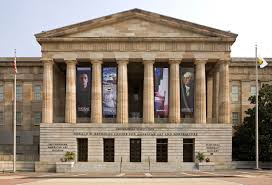Nov 27 2019 - May 25 2020
Smithsonian American Art Museum
Washington, DC
Chiura Obata (1885–1975) is one of the most significant Japanese American artists working in the United States in the last century. Obata’s seemingly effortless synthesis of different art traditions defies the usual division between “East” and “West.” Chiura Obata: American Modern presents the most comprehensive survey of his rich and varied body of work to date with more than 150 paintings and personal effects, many of which are on public display for the first time.
Born in Okayama, Japan, Obata emigrated to the U.S. in 1903. His seven-decade career spanned the period of restricted immigration in the 1920s and 1930s, the incarceration of Japanese Americans in camps in the 1940s, and the post-World War II integration of Japanese art and philosophy into American cultural life.
Obata’s work ranges from the traditional to the modern as he navigated a path that united his Japanese training with his American environment. The exhibition includes works by Obata that survey the complex variety of styles, techniques, and genres in which he worked. Among the selections are his nihonga (Japanese-style) studies dating back to his youth and élite training in Japan; intimate paintings from his days as an artist-reporter in San Francisco; woodblock prints that demonstrate his superlative sense of design; large-scale scrolls and watercolors of California landscapes, including his famous Yosemite series; playful sumi-e of animals; still lifes of ikebana (flower arrangements) by his wife, Haruko Kohashi, an artist in her own right; and other works—from small sketches to large screens and hanging scrolls—that demonstrate the variety of his interests.
This retrospective illuminates the intense and productive cross-cultural negotiations—in the context of both California modernism and the twentieth-century racial and ethnic relations in the U.S.—that Obata’s life and work exemplify. His faith in the power of art, his devotion to celebrating the grandeur of what he called “Great Nature,” and his compelling personal story as an immigrant and an American are as relevant to our contemporary moment as ever.
Credit: Exhibition overview from museum website.
Exhibition Venues & Dates
Nov 27 2019 - May 25 2020
Smithsonian American Art Museum
Washington, DC
